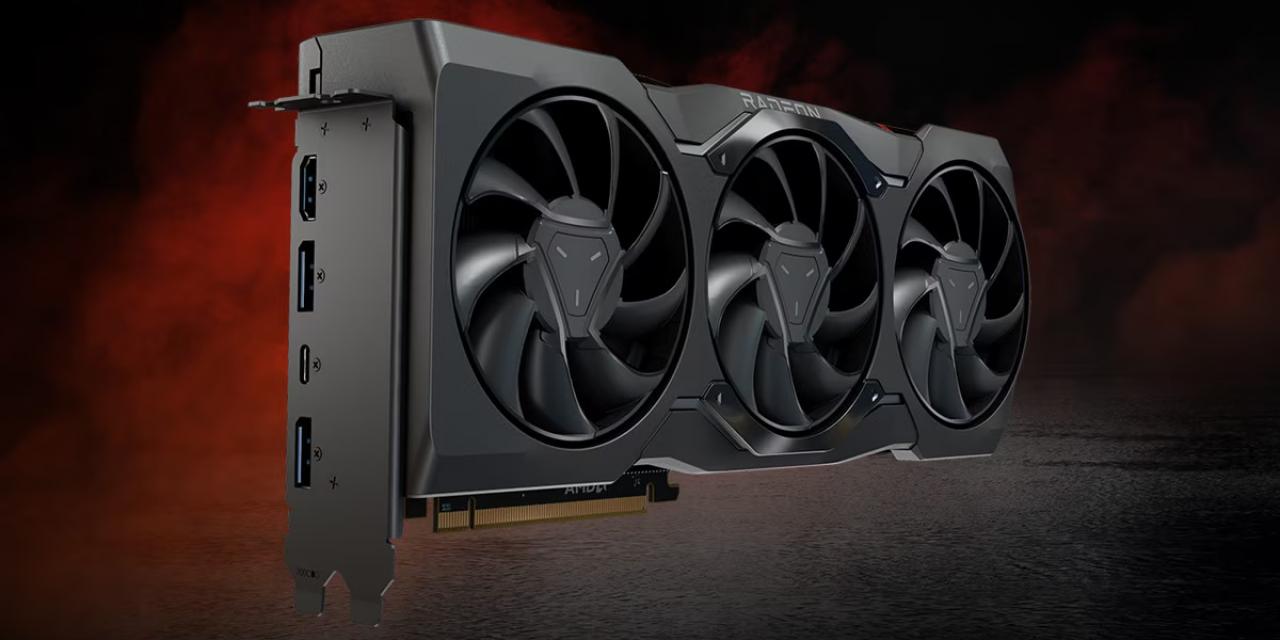
Spooky season is almost upon us, and if you want to avoid everything that goes bump in the night, well, gaming indoors is the best way to do so. However, games have never been as demanding as they are now, and if you want to make sure your computer is up to the task, upgrades are always worth keeping an eye on.
Now is the best time to look for upgrades, as AMD has just released a new series of graphics cards onto the market, challenging Nvidia’s supremacy, and offering everyone a choice of highly-powered GPUs at a competitive prices. But how have AMD’s most recent releases shaken up the marketplace? Here are the best graphics cards for Halloween 2023.
Best high-end GPU: Nvidia GeForce RTX 4090
Despite the release of AMD’s excellent RX 7900 range, the Nvidia GeForce RTX 4090 holds onto its crown as the best high-end GPU. The reason for that is simple: It’s powerful, and simply beyond almost everything else on the market right now. Nvidia’s first foray into its Ada Lovelace architecture is still its most powerful one, and the card to beat.
The base clock speed comes in at 2,235MHz, with the potential to go up to 2,520MHz. 24GB of GDDR6 RAM joins 16384 Nvidia CUDA cores to create a flagship GPU that’s seriously powerful, and much more powerful than the previous RTX 3090 Ti. It’s the card to buy if you want effortless 4K gaming at a high frame rate, and it can even handle 8K at 60Hz.
That power comes with a few prices of course. The first is pure size. This is a large card, and you’ll need to make sure you’ve got plenty of room in your computer’s case. The second, and probably the larger of the two, is price. The Nvidia GeForce RTX 4090 starts from $1,600, and AMD’s releases have done little to dent that MSRP.
Best alternative high-end GPU: AMD Radeon RX 7900 XTX
AMD’s flagship GPU, though not in quite the same league, is still a strong GPU, and comes with a much more reasonable price tag to boot. If you’re looking for a great alternative to the Nvidia GeForce RTX 4090, and are willing to live with a few differences, then the AMD Radeon RX 7900 XTX is a solid card.
The major advantage the RX 7900 XTX offers over the RTX 4090 is in price. $1,000 isn’t a bad price for a high-end graphics card, and it’s something of a bargain when you consider how well this stacks up against Nvidia’s top card. The RTX 4090 still has the edge, but AMD’s top card still offers great gaming performance.
The major hitch is in ray tracing. It’s here that Nvidia's cards hold a big advantage, and AMD’s just can’t compete. However, AMD’s cards generally score higher for pure rasterization in benchmark tests, meaning the lack of ray tracing performance is something you can live with. FSR2 also offers a reasonable alternative to DLSS as well, but it’s definitely a poor man’s version of Nvidia’s tech.
If this sounds a bit hit and miss, well, it can be. But AMD’s most expensive card this generation is a very good option for you if you love AMD’s tech, and don’t care about ray tracing.
Best midrange GPU: Nvidia GeForce RTX 4060 Ti
So there are plenty of caveats with this choice, but with prices starting ar $400, it’s hard not to recommend the Nvidia GeForce RTX 4060 Ti for the best midrange GPU. The RTX 4060 Ti is hampered by its rather paltry 8GB of memory, but it manages to hold down 1440p gameplay using rasterization, or 1080p with ray tracing, offering a good upgrade over the previous RTX 3060 Ti.
It would be nice if it came with more memory for the price, though, which is part of the reason this recommendation comes with such a hefty caveat. At $400, it’s still a decently good deal, but it might be worth waiting for any sales to see whether you can knock any more money off it to make that 8GB of memory sting a little less.
Best budget GPU: AMD Radeon RX 7600
Saying the AMD Radeon RX 7600 is something of a bargain is understating it a little. AMD’s budget card is a strong performer at the lower end of the resolution scale, scoring highly at 1080p, and even putting up a decent fight when displays turn up to 1440p. That’s impressive, given it’s a card in the sub-$300 territory.
It only has 8GB of memory and a 128GB memory bus, but even with those slight handicaps, it performs well for the price. Demanding games may mean you need to make some tweaks to settings, but AMD’s tech does well at making those issues feel small. All-in-all, this is a very reliable card for the price, and the best budget card we found.








